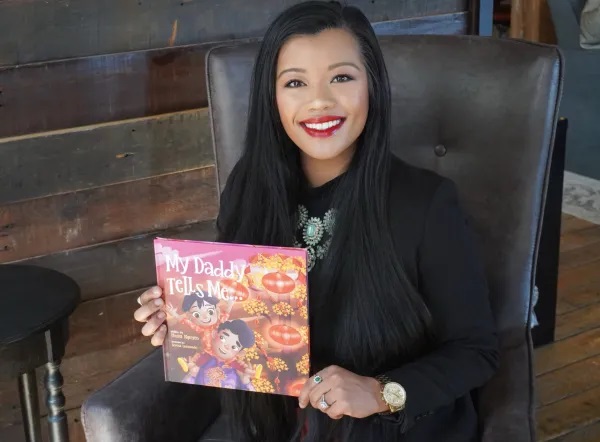We’ve repeated this statement more times than we can count, but it is still worth naming: We are living in a challenging time. It’s hard to stay motivated or feel like we have the power to make an impact when so much is happening in the world. It’s hard to move through these times, be present, or feel like our actions make a difference. We also know the importance of taking in moments where we see positive social change. The moments where I witness belonging come to life keep me going in this work.
Here are a few I can name:
At AMAZEworks, we have seen so many different examples of belonging brought to life. This work is hard. It requires vulnerability, self-accountability, empathy, and responsiveness. It requires us to ask questions, make mistakes, be called in, own our impacts, and call in others to more truth, love, and learning. We do this work because we believe in a world where everyone experiences belonging. We know this world is possible because we see examples of belonging brought to life every day.
We know the power of individual and interpersonal action. We encourage you to take notice of and celebrate the moments when you experience and witness belonging in action. Belonging lives within us, between us, and among us. Together, we can bring belonging to life.
With gratitude for Anti-Bias Educators everywhere,
Rebecca Slaby
AMAZEworks Executive Director

Thuba Nguyễn (she/her) is an Early Childhood Education Specialist, member of the AMAZEworks board of directors, and children’s book author of her newly published book, My Daddy Tells Me. Thuba aims to promote early literacy as a catalytic tool for generational and social change through her work as an author, educator, and small business owner of Children of the Collective Arts Academy, LLC, offering services ranging from DEI training, consultations, restorative circles for community healing, and more.

Why we love this book: This is a great book for affirming each child’s identity as well as developing empathy skills. The discussion questions ask children to reflect on their own experiences, giving them the opportunity to take the perspective of others for deeper understanding. The poems also validate that all of our feelings are ok and helpful, and we can learn from them.

About Neighborhood Forest: Neighborhood Forest is a non-profit social venture dedicated to giving children their very own tree to plant on Earth Day – for free – every spring. Since 2010, Neighborhood Forest has mobilized over 1000 schools, libraries, and youth groups, reached over 250,000 families, and (after this Earth Day) will have given over 100,000 children in 48 states (including Canada) the opportunity to plant their very own tree.
Why we love this organization: Neighborhood Forest wants to give every child the joy of planting trees and watching them grow. In the process, the organization helps beautify our neighborhoods, remove carbon from the atmosphere, and help instill in the hearts of our little ones a sense of magic, wonder, and love for our planet.
Goals for 2022: In 2021, Neighborhood Forest went viral among librarians and experienced a 20x surge in growth. They gave a record 18,500 kids in 35 states their very own tree to plant on Earth Day. In 2022, they are looking to more than double. Their goal is to reach 50,000 children in 2022 and to continue to double each year for the next 10 years. They are going to inaugurate April 26th (four days after Earth Day and four days before Arbor Day – in the heart of Earth Week) as Neighborhood Forest Day – A Free Tree Festival – celebrating generosity, abundance, connection, joy, and unity.
Get Involved: Would you or someone you know (a business, organization, foundation, and / or individual) be interested in joining the Neighborhood Forest growing family of supporters to help make this dream a reality?
Check out their growing portfolio of “then and now” photos of the kids growing with their trees! Join Neighborhood Forest.

AMAZEworks is thrilled to welcome Ryan Boosinger to our Board of Directors! Ryan Boosinger (he/him) currently serves as the Relationship Manager for Lutheran Social Service of Minnesota’s Supported Decision-Making and Guardianship Options and Pooled Trust teams. Most recently, Ryan managed programming for LSSMN’s Disaster Services on a national level, developing and implementing a wellness and recovery curriculum that serves children and families of disaster impacted communities. His free time is spent largely in the kitchen, in the garden, or enjoying the outdoors with his three big, awesome rescue dogs. Ryan leads with his heart and his head. He deeply values the mission of changing lives for the better, because “we all do better when we all do better.” (Paul Wellstone) Welcome, Ryan!
This is an activity that explores poetry and identity in ways that combine visual images with words that inspire pictures. Although this lesson was designed to be used in the classroom, people of all ages can write an “I Am” poem to engage in self-reflection and identity development.
Instructional Materials
Introduction
Begin by explaining that each of us is unique and that each of us experiences life from our own unique perspective Even people who live in the same home experience the world differently. This is an opportunity to share our personal journeys and what makes each of us unique through poetry.
Used with permission from Pillsbury House Theatre’s Breaking Ice.